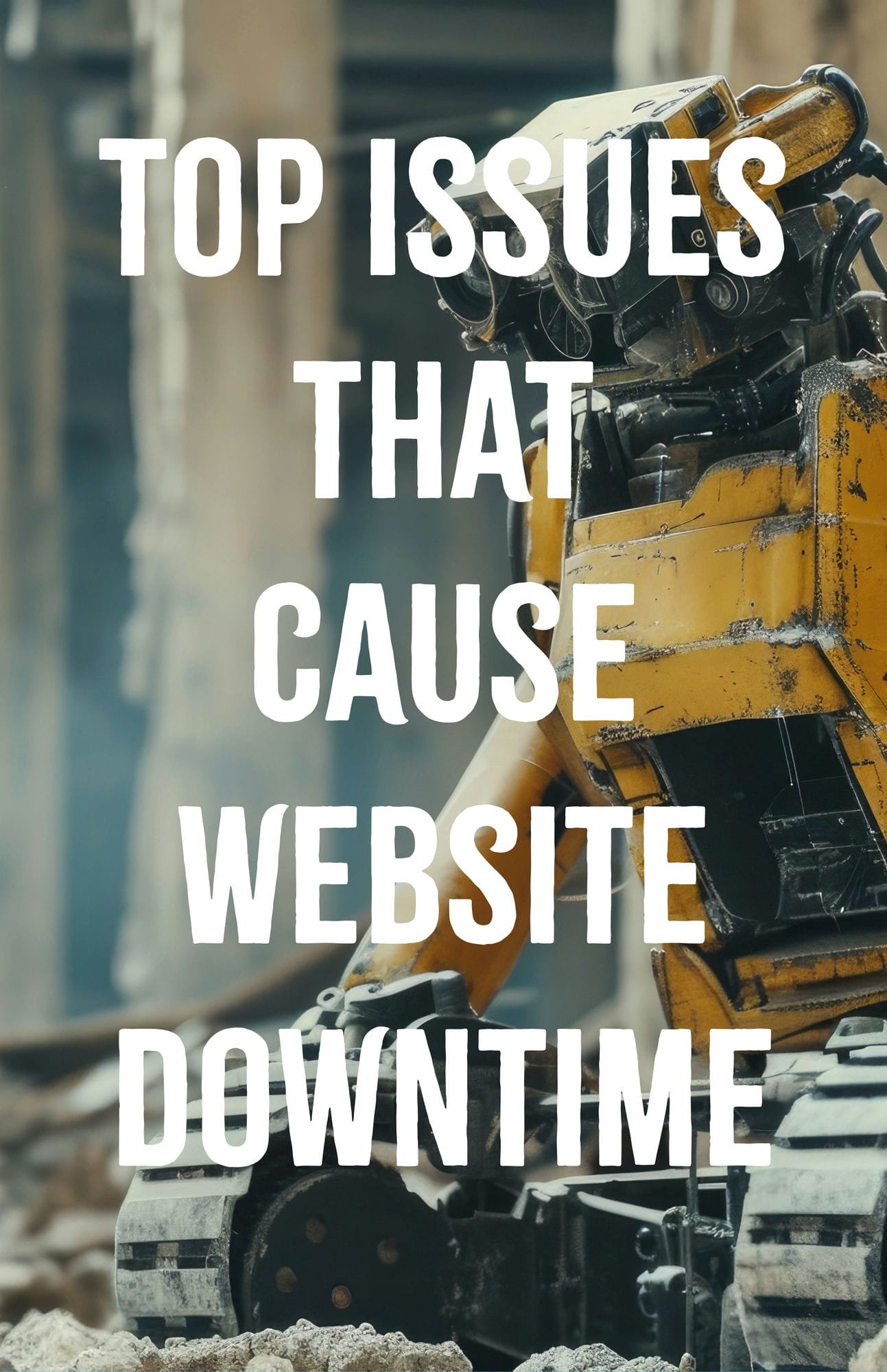
Website downtime can be frustrating for both businesses and their customers. Understanding the common reasons why a website might go down can help you take proactive measures to prevent it. Here are the top issues that can cause website downtime and some tips on how to avoid them.
1) Server Overload
A sudden spike in traffic can overwhelm your server, causing it to crash. This is often seen during sales events, viral content moments, or unexpected publicity.
How to prevent it:
- Use a Content Delivery Network (CDN) to distribute traffic.
- Opt for scalable hosting solutions that can handle traffic spikes.
- Monitor your traffic and server performance to anticipate needs.
2) Software Bugs and Updates
Software bugs or issues arising from updates can lead to unexpected downtime. This includes problems with the website’s content management system (CMS), plugins, or other software components.
How to prevent it:
- Regularly update your CMS like WordPress and plugins to their latest versions.
- Test updates in a staging environment before applying them to the live site.
- Use reliable software and plugins from reputable sources.
3) Cyber Attacks
Websites are frequently targeted by cyber attacks, such as Distributed Denial of Service (DDoS) attacks, hacking attempts, or malware infections, which can take a site offline.
How to prevent it:
- Implement robust security measures such as firewalls and intrusion detection systems.
- Regularly update all software to patch vulnerabilities.
- Use a reliable web host with strong security protocols.
4) DNS Issues
Domain Name System (DNS) issues can prevent users from accessing your website. These issues can arise from DNS server failures, misconfigurations, or propagation delays after domain changes.
How to prevent it:
- Use a reputable DNS provider with a history of reliability.
- Monitor your DNS settings and ensure they are correctly configured.
- Plan DNS changes carefully to avoid prolonged propagation issues.
5) Hardware Failures
Hardware failures at the hosting provider’s data center can result in website downtime. This includes failures of servers, network equipment, or power supplies.
How to prevent it:
- Choose a hosting provider with high redundancy and reliability.
- Ensure your host has a solid disaster recovery plan.
- Consider cloud-based hosting solutions that offer higher uptime guarantees.
6) Expired Domain or SSL Certificate
Forgetting to renew your domain name or SSL certificate can lead to your website going offline or users seeing security warnings.
How to prevent it:
- Set up automatic renewals for your domain and SSL certificate.
- Monitor expiration dates and set reminders well in advance.
- Keep your contact information updated with your domain registrar.
7) Human Error
Mistakes during website updates, coding errors, or incorrect configurations can all cause downtime.
How to prevent it:
- Train your team on best practices and proper procedures.
- Implement a version control system to track changes and revert if needed.
- Use a staging environment to test changes before deploying them live.
Keeping Your Website Online and Running Smoothly
Website downtime can be detrimental to your business, but understanding the common causes and taking proactive steps can help you minimize the risk. Regular maintenance, robust security, reliable hosting, and careful planning are key to keeping your website up and running smoothly. If you need assistance with website management or security, Graticle Design is here to help. Contact us to learn more about how we can support your online presence.





